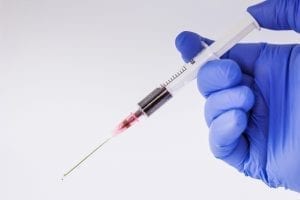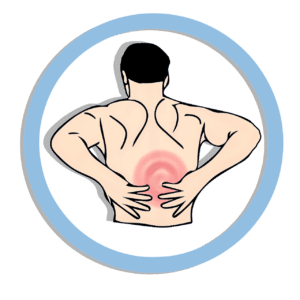Complex Regional Pain Syndrome (CRPS)
What is CRPS?
Complex regional pain syndrome (CRPS), a chronically painful condition, most often affects a person’s arms, legs, hands, or feet. Its onset usually occurs after an injury to the affected area and is thought to stem from damage to the central (brain/spinal cord) or peripheral (brain/spinal cord signals to the body) nervous system. Most often, people experiencing CRPS suffer excessive or prolonged pain, as well as skin color changes, swelling, and a change in temperature to the area affected. The symptoms of CRPS can vary in length and severity, but most cases are mild and resolve over time. Other people may be left with certain levels of disability if resolution does not occur. CRPS is more common among women, but anyone can be affected. The average age of those affected is 40, and children very seldom have it prior to age 10.What are the symptoms of CRPS?
People with CRPS report experiencing constant and prolonged pain that can feel like pins and needles, or may manifest as a burning sensation. The pain can spread from a localized area to the entire limb, for example, starting in the hand, then spreading to the shoulder. Often, even a light touch can be painful. This is called “allodynia.” Their skin can appear thin and somewhat shiny, and joints can stiffen.What are the causes of CRPS?
There is no definitive answer as to what causes CRPS in some people, while others with the same injury never develop symptoms. However, more than 90% of reported cases of CRPS have a clear history of injuries such as sprains, fractures, and soft tissue damage caused by cuts, burns, and abrasions. There may be a genetic component, but this has not been proven. It has been noted that people with asthma are more prone to CRPS, which is thought to affect the auto-immune response.How is CRPS diagnosed?
Presently, a single diagnostic test confirming CRPS is not available. Diagnoses are made based upon a patient’s medical history and symptoms. Because the majority of people recover gradually, diagnosis later in the course of the disorder is even more difficult, but testing can rule out other conditions such as arthritis and Lyme disease.What treatment options are available for CRPS?
Exercise therapy is often used to treat CRPS because it can improve blood flow and mitigate circulatory disorders. It can also prevent or reverse changes that occur in the brain that are caused by chronic pain. Psychotherapy is also useful because many people with CRPS develop depression, post-traumatic stress disorder, and anxiety. To learn more about other drugs and medical interventions used in the treatment of CRPS, click here.Where can I find more information about CRPS?
Complex Regional Pain Syndrome (CRPS) Articles



PharmaTher Announces the FDA Granted Orphan Drug Designation for Ketamine to Treat Complex Regional Pain Syndrome
Alyssa Stevens
November 24, 2021
Read More »

Newly FDA Approved Ketamine Has the Potential to Slow ALS Progression
Rose Duesterwald
November 4, 2021
Read More »

Oct. 29: Join Uplifting Athletes Ambassador Marni Cartelli for Press4Hope
Jessica Lynn
October 25, 2021
Read More »

Two Sisters With Rare Diseases Are Working Towards Recovery With the Help of Their Family
Rose Duesterwald
March 10, 2021
Read More »

A New Potential Therapy for Complex Regional Pain Syndrome
Trudy Horsting
January 5, 2021
Read More »

No Link Between Human Papillomavirus Vaccine and Autonomic Dysfunction Syndromes
Patient Worthy Contributor
October 22, 2020
Read More »






